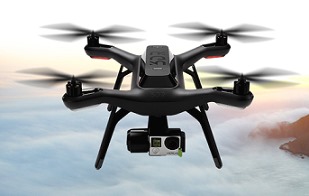NUNCHUK
The Nyko Kama wireless nunchuk can also be used to control the ESC. Note that not all nunchuks for the nintendo wii will work, because they slightly differently.
Nyko Kama wireless nunchuk은 또한 ESC를 제어하기 위해서 사용되어질 수 있습니다. nintendo wii에 대한 모든 nunchuk들이 조금씩 다르기 때문에 동작하지 않는다는 것을 기억하세요.
Control mode
Disabled or current control with or without reverse. If reverse is used, the Z button is used to toggle a direction change.
Disabled or current control with or without reverse. 만일 reverse가 사용되면 방향 전환을 위해서 Z 버튼이 사용됩니다.
Settings
Deadband: The span in the centre of the throttle that should be ignored.
Deadband: 스로틀의 중심에서 확장은 무시되어져야 합니다.
RPM limits: Limit the electrical RPM of the motor. The start value is the point where the torque should start decreasing and the end value is the point where the output will be switched off. Setting them slightly apart will give a soft RPM limit. Setting them very high will disable the RPM limit.
RPM limits: 모터의 전기적인 RPM을 제한합니다. start 값은 토크가 감소하기 시작하는 지점이고 end 값은 출력이 스위치 off되는 지점입니다. 이들은 약간 분리해 설정하는 것은 부드러운 RPM 제한을 줄 것입니다. 이들은 매우 높게 설정하는 것은 RPM 제한을 불가능하게 할 것입니다.
Ramping time constants: How fast the throttle command should be followed, in seconds.
Ramping time constants: 스로틀 명령이 얼마나 빨리 초 단위로 뒤따르는지를 나타냅니다.
Multiple ESCs over CAN can be enabled to connect several VESCs over CAN bus. All VESCs must have different Controller ID and the slave VESCs must have Send status over CAN enabled (see the general tab under app configuration). The slave VESCs don’t need to have any application enabled since they will just be listening for CAN commands. Traction control can also be enabled, which reduces the torque on motors that spin faster than the slowest motor proportional to their speed difference. To connect VESCs over CAN-bus, connect the CANH and CANL signals between them. DO NOT connect 5v and GND because that is likely to cause ground loops which can reset and/or kill the VESCs.
VESC - Open Source ESC(7)을 참조!
A video where I test this:
Realtime Data Display
Use the "Realtime Data" tab to display realtime information from the ESC. Make sure that the "Activate sampling" box is checked.
ESC로부터 실시간 정보를 보여주기 위해서 "Realtime Data" 탭을 사용하세요. "Activate sampling" 박스가 체크되었는지 확인합니다.
Common Problems and Solutions
As I encounter different problems, I will put them here together with possible solutions for reference.
제가 다른 문제를 직면한다면 여기에 가능한 방법을 참조로서 올릴 것입니다.
Uploading the firmware does not work.
Make sure that you have followed all steps in the tutorial, including adding udev rules to access the programmer without being root.
여러분이 가이드라인에 모든 단계를 따라왔는지 확인하세요. root가 아니면서 프로그래머에 접근하기 위한 udev 룰을 추가하는 것을 포함해서 말입니다.
Don’t use a too long cable for the SWD connector.
SWD 커넥터로써 너무 긴 케이블을 사용하지 마세요.
Make sure that you have a working programmer. I got one from ebay that didn’t work at all and one that died quickly. Otherwise they have been reliable though.
여러분이 작동한 프로그래머을 갖고 있는지 확인하세요. 저는 ebay로부터 전혀 동작하지 않는 하나와 금방 손상된 하나를 얻은 적이 있습니다.
A DRV8302 fault code appears as soon as the motor starts.
Make sure that R16 is not mounted (see the comment in the schematic).
R16이 설치되지 않았는지 확인하세요(회로도에 주석을 보세요)
Connecting to VESC via BLDC Tool does not work.
Run dmesg to see which ttyACMx port gets assigned to VESC when plugging in the mini-usb cable.
mini-usb 케이블을 꼽았을때 어떤 ttyACMx 포트가 VESC에 할당되었는지 보기를 위해서 dmesg를 실행하세요.
Make sure that the mini-usb cable is plugged in and that power is connected to VESC. Connecting BLDC Tool is not done via the SWD programmer, but via the mini-usb port.
mini-usb 케이블이 연결되고 파워가 VESC에 연결되었는지 확인하세요. BLDC Tool을 연결하는 것은 SWD programmer를 경유하는 것이 아니고 mini-usb 포트를 사용합니다.
If you are using a different usb-connector than the one from the BOM, make sure that the order of the pins is correct. The connector in the BOM is upside-down, so a connector that isn’t will have all the pins mirrored.
만일 여러분이 BOM에서와 다른 usb 커넥터를 사용한다면 핀의 순서가 올바른지 확인하세요. BOM에서 커넥터는 위아래가 뒤집힌 것이고 그렇지 않은 커넥터는 모든 핀이 mirror 될 것입니다.
My motor is not running properly.
Make sure that you have configured VESC for your motor as described above. VESC is not plug-and-play and needs an individual configuration for each motor. Without the configuration, the motor will run poorly or not at all. Read the instructions carefully.
여러분이 위에서 설명된 것처럼 여러분의 모터에 대해서 설정된 VESC를 갖고 있는지 확인하세요. VESC는 plug-and-play가 아니고 각각의 모터에 대해서 각자의 설정을 필요로 합니다. 설정 없이 모터는 제대로 회전하지 않거나 전혀 회전하지 않을 수 없습니다. 가이드라인을 주의깊게 읽어보세요.
Is there a way to “boost” the startup of my motor when using current control?
Yes, the Startup boost option under Motor Configuration > Misc tab in BLDC Tool can be adjusted as described above.
네, BLDC Tool에서 Motor Configuration > Misc 탭 아래에 Startup boost 옵션은 위에서 설명한 것처럼 조정될 수 있습니다.
Update: I have ordered assembled VESCs, some of them are for sale
Update about this update: There are no assembled ESCs left. However, If you are interested in assembled VESCs you can still send me an email as described below so that I can put you on my extra list. If someone changes their mind or if there are other problems, I can send you VESCs that get left.
이 업데이트에 대한 업데이트: 조립된 ESC가 없습니다. 그러나 여러분이 조립된 VESC에 관심있다면 여러분은 여전히 아래의 설명했듯이 이메일을 보낼 수 있습니다. 그 결과 저는 제 여분의 리스트에 여러분을 포함하고 만일 누군가가 마음이 변하거나 다른 문제가 있다면 저는 남은 것을 여러분에게 보낼 수 있습니다.
I have ordered 100 assembled VESCs and they will arrive this or next week. I don’t need all of them, so I will sell some of them for 115€ + shipping. Worldwide shipping with tracking is 20€ per order (which can contain more than one VESC). Shipping within Sweden is less expensive and I will update this post as soon as I know the price. You can contact me by email if you are interested (benjamin at vedder.se). Tell me how many VESCs you’d like and your address, and I will reply with an email that confirms that I have put you in my list. Later, when I have figured out how to accept payments, I will send another email with information about how to do that. As soon as I receive your payment, I will ship the VESC(s) to you and send an email with tracking information
저는 100개의 조립된 VESC를 주문했고 이번주나 다음주에 도착할 것입니다. 저는 이들 모두를 필요로 하지 않습니다. 그래서 저는 일부를 115€ + shipping으로 판매할 것입니다. 추적없이 Worldwide shipping은 주문 당(이것은 한개 이상의 VESC를 포장할 수 있습니다) 20€입니다. 스웨덴 내에서 배송은 덜 비싸고 저는 이 글을 가격을 아는데로 업데이트 할 것입니다. 여러분은 여러분에 흥미있다면 이메일로 저와 연락할 수 있습니다(benjamin at vedder.se). 제게 원하는 개수와 여러분의 주소를 알려주세요. 그리고 저는 제 리스트에 여러분을 기입하고 확인하기 위해서 답장 메일을 보낼 것입니다. 후에 저게 어떻게 돈을 받을지 정한 후에 저는 그것을 어떻게 하는지에 대한 또다른 메일을 보낼 것입니다. 제가 여러분의 지불을 받자마자 저는 여러분에게 VESC를 배송할 것이며 추적 정보와 함께 이메일을 보낼 것입니다.
I will update this information in the coming days, so make sure to check if there are updates.
저는 이 정보는 앞으로 업데이트 할 것입니다, 그래서 업데이트가 있는지 없는지 확인할 것입니다.
'Flight Controller 이해 > 전자속도제어기(ESC)' 카테고리의 다른 글
| VESC 하드웨어(v4.12)의 부품리스트 (0) | 2018.01.31 |
|---|---|
| Qt에서 vesc-tool 컴파일 방법 (0) | 2018.01.30 |
| VESC - Open Source ESC(7) (0) | 2018.01.07 |
| VESC - Open Source ESC(6) (0) | 2018.01.06 |
| Communicating with the VESC using UART (1) | 2018.01.05 |








